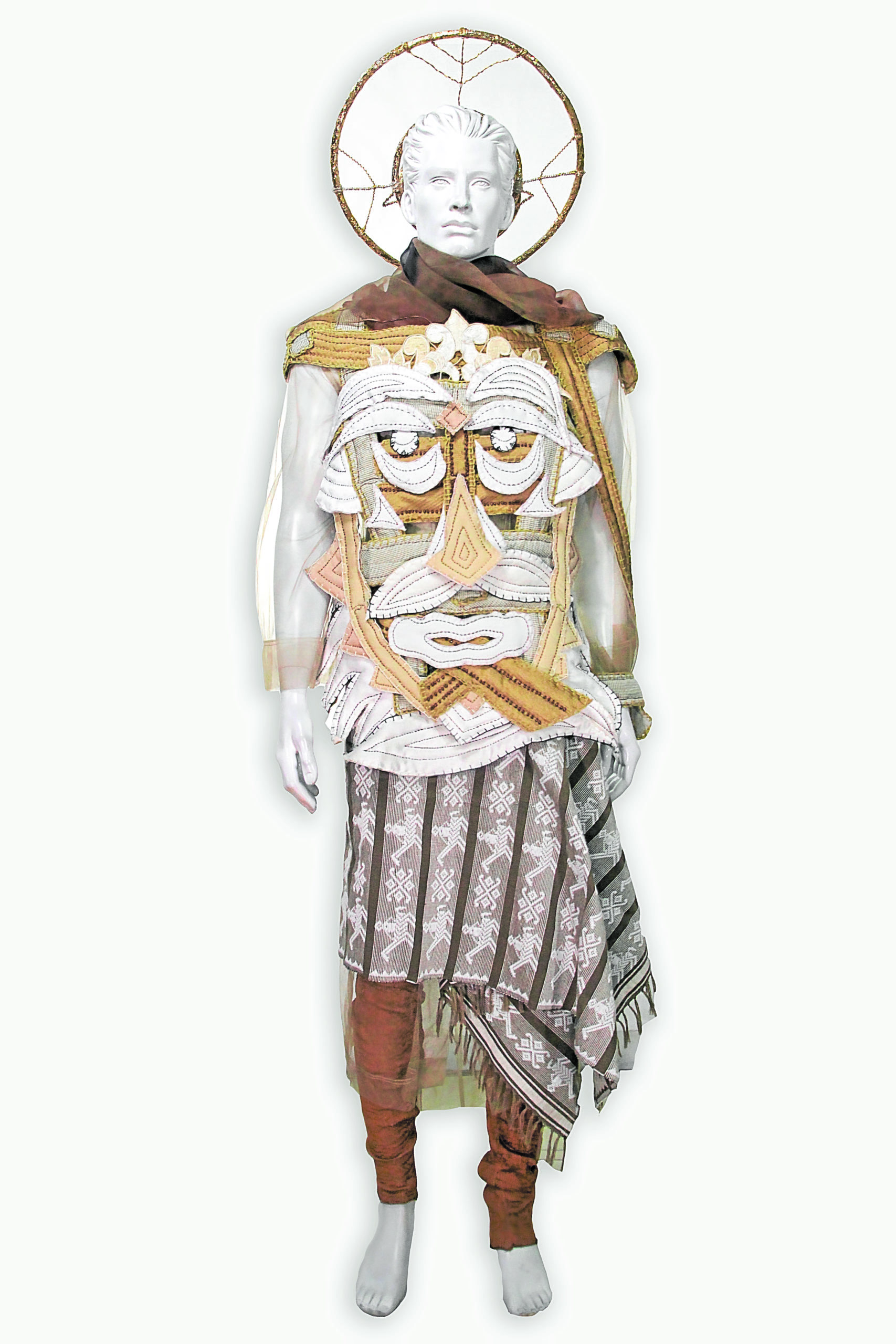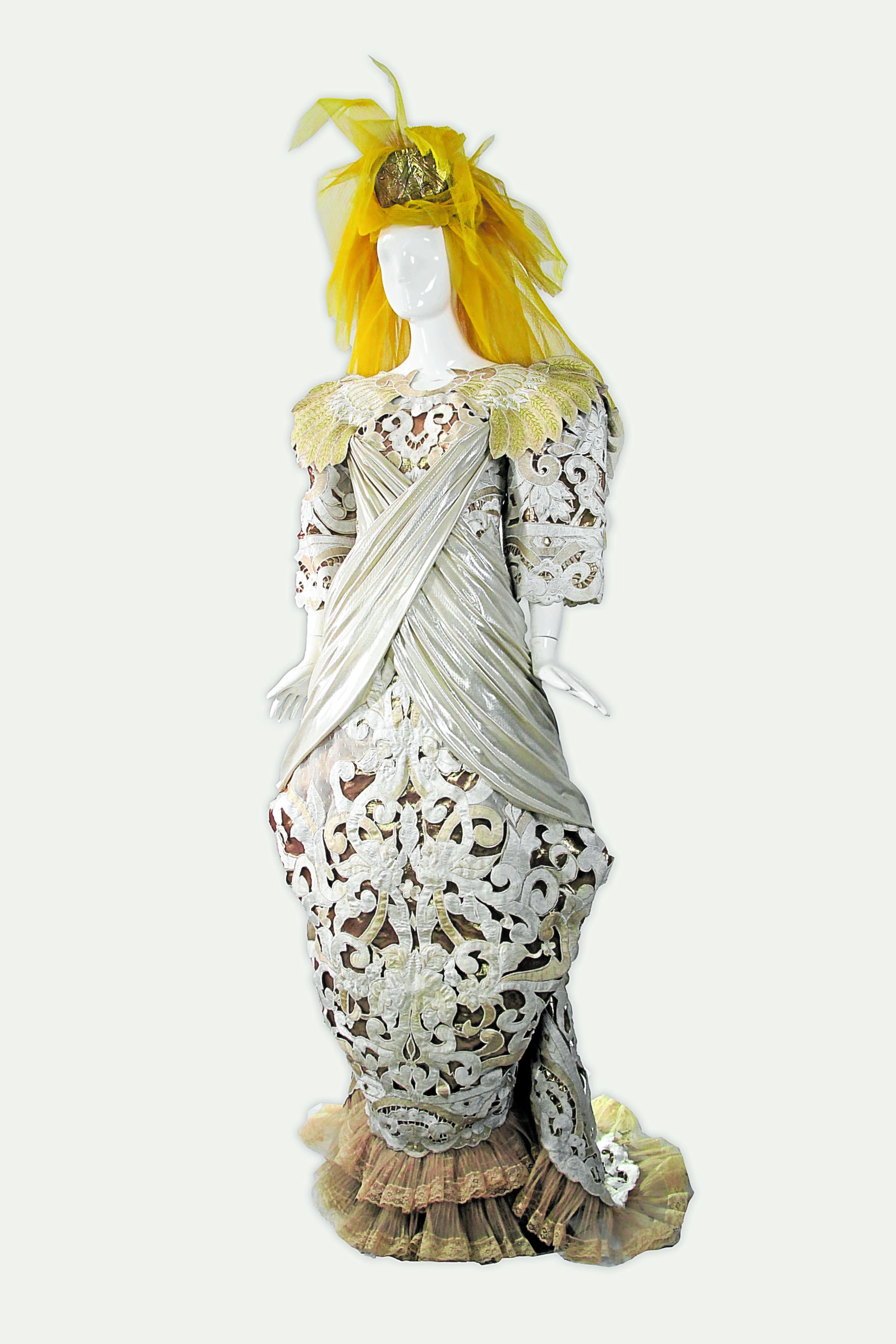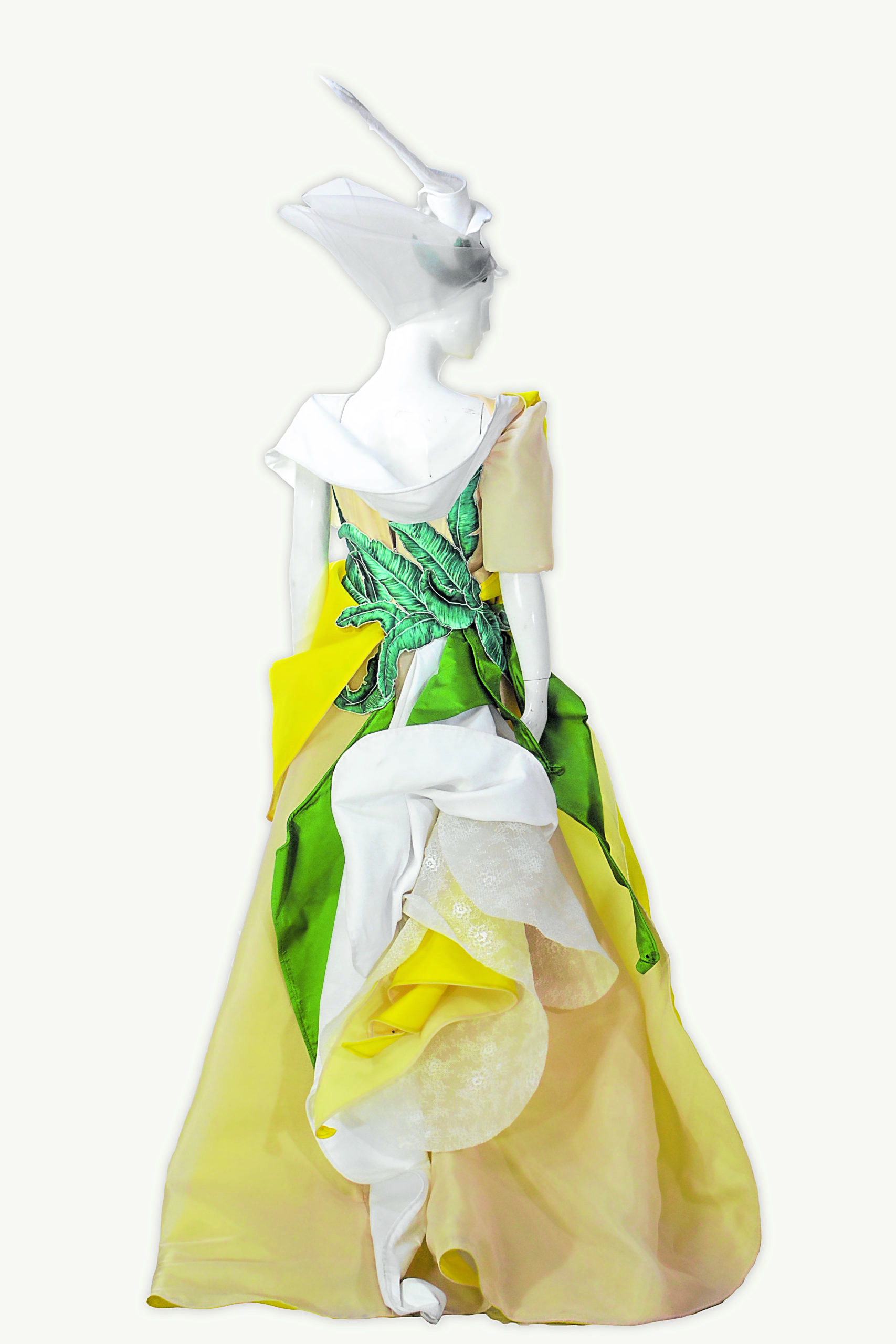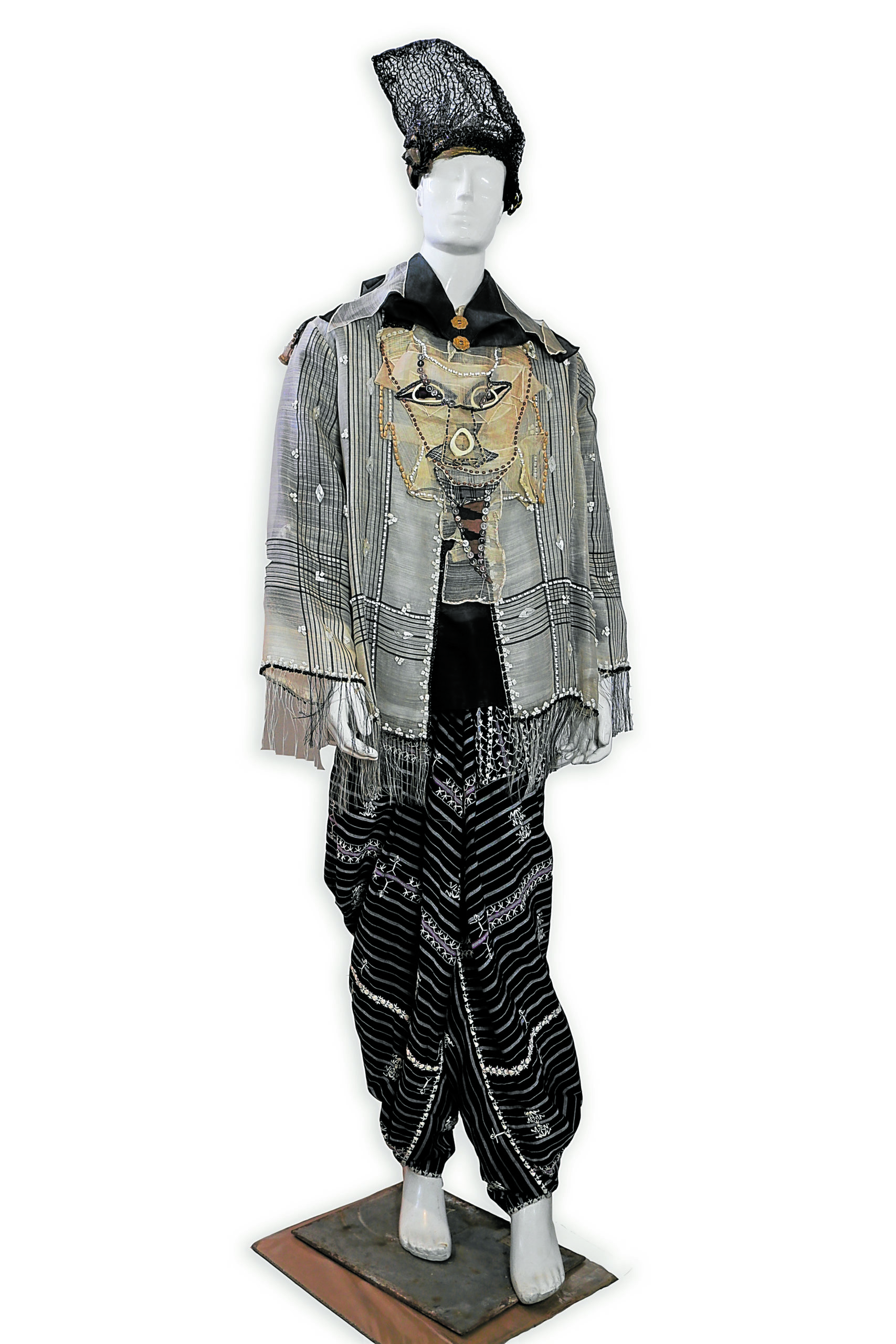
It’s been a year with no grand affairs to wear designer Steve de Leon’s maximalist Filipiniana, and his artisans and sewers have been locked down in Mindoro. To keep his spirits high, he has been saying the rosary and praying for light. The quarantine gave De Leon the opportunity to produce his passion project, “The Mysteries of Light in Tapestry and Artwear” book. This photo essay chronicles a decade’s work of appliquéd barong, tapestries and gowns, inspired by Pope John Paul’s “Luminous Mysteries.” This new set of prayers focuses on the landmark events in the life of Jesus Christ.
De Leon explains that this output was a sequel to his first collection, which translated the Holy Rosary of the Virgin Mary.
In 1990-1991, he became the first fashion designer to be exhibited at the Metropolitan Museum of Manila for his art wear. Titled “Misterio ng Birhen Maria,” the exhibit featured tapestries, evening clothes, terno and baro’t saya in tableaux of the Joyful, Sorrowful and Glorious Mysteries.
One such vignette was “The Annunciation of Angel Gabriel to Mary,” which showed a mannequin in a jusi dress with embroidered callado draped in a long cape beside a heavily appliquéd tapestry of Mary.

Christ in multimedia art
Way before recycling fabrics and materials and collaborating with weavers became fashionable, De Leon was already working with customized indigenous fabrics and using scraps from vintage Filipiniana, beads and antique accessories. Connoisseurs described his clothes and tapestry as soft sculpture, as he experiments with religious text and textiles.
De Leon forges the connection between fine art and craft through his assemblages of fabrics, jewelry, beads and accessories, which turn out to be mixed-media sculptures. The medium allowed him to break free from the decorative connotations of tapestry and fashion and to concentrate on the spiritual message.
“Decades ago, I developed my own abaca, piña, alaskin and peau de soie. The weavers would fuse piña with silk and abaca. I would combine shell, nacre, wood, pearls and antique combs,” he says.
The “Luminous Mysteries” collection highlights De Leon’s signature barong, layered with intricate appliqués and overskirts of ethnic fabrics. The designer injects the religious themes with native motifs, such as dragonflies made of pearls and bahay kubo from banana fibers.
The Baptism of Jesus in the River Jordan is interpreted through sheer barong shirts with the appliquéd faces of Jesus and John the Baptist, and an asymmetrical terno with a golden dove on the sleeve, symbolizing the Holy Spirit.
The Wedding Feast in Cana is depicted in elaborate tapestries of corals, shells, beads, pearls and embroidery that define the faces of Jesus, Mary and the miracle of the water turned into wine.
The lavishness of the wedding is rendered through okir (Maranao curved patterns) appliqués on a wedding ensemble. Then there are ternos and trajes de mestizas, shaped like antique wine jars, patched with native fabrics and filled with embroidery.
The Proclamation of the Kingdom of God is translated into a tapestry of jusi and gold embroidery sweeping upward the opal-lined Cross.
The Beatitudes are represented by colorful, hand-painted jusi robes and a traje de mestiza with calla lily as a symbol of hope. The lily is shaped from kanyamaso, a burlap or canvas fabric used for embroidery.
Transfiguration of Our Lord is a dramatic tapestry of baro scraps and white paint showing Jesus as Light. De Leon creates shorter barong with wider sleeves, made from embroidered tablecloth from Taal, Batangas, and teamed with wide-legged cropped pants.
Institution of Christ is a series of luxurious abaca silk barong and cotton camisa de chino barong adorned with meticulous handwork of the faces of Christ and the Apostles and the emblems of their ministry.
The piece de resistance, The Last Supper, is an abaca tapestry of the faces of the ensemble made from gold threads, camel bone, wooden and glass beads.

Assemblage
“The Mysteries on Light” is on view at the Eskinita Art Farm in Tanuan, Batangas, until April 21. De Leon explains the exhibit was set up to celebrate the 500th anniversary of Christianity in the Philippines
De Leon’s penchant for handwork was developed by his mother, a seamstress. As a teenager, he made extra money by doing beadwork for wedding gowns and embroidering casual dresses. Every weekend, he would spend his earnings on ethnic beads and vintage accessories in antique shops on Mabini street in Manila. At the age of 15, he held his first fashion show at the Nile club. When Gary Flores directed the luncheon fashion shows at the Hyatt in the early ‘70s, De Leon was a featured designer.
In the early ‘80s, De Leon cultivated his interest in Filipiniana and in developing local fabrics when he worked on a documentary series about the lifestyle in the late 19th century. As a costume designer, he was guided by the late historian Dez Bautista. When they went on location shoots in the provinces, De Leon met various weavers who produced abaca, banana fiber and piña fiber.
De Leon came into prominence when he designed the wedding ensemble for Viva Films’ “Dapat Ka Bang Mahalin” in 1982. Sharon Cuneta wore a voluminous, fashion-forward traje de mestiza while her leading man, Gabby Concepcion, was dressed in a nontraditional striped barong made from banana fiber. De Leon has since been known for his modern Filipiniana.
He befriended author and cultural icon Gilda Cordero Fernando, who appreciated his assemblages of barong, kanyamaso, ethnic fabrics and collectibles. She used one of his works as a tablecloth and asked her daughter-in-law, potter-artist Lanelle Abueva-Fernando, to make plates patterned after the assemblages. He collaborated with Fernando in her book and fashion show, “Jamming on an Old Saya,” recycling scraps from these vintage Filipiniana dresses into fun fashion.
Other illustrious clients include the late politician Carmencita Ongsiako Reyes, Bulacan Tourism chair Allan Tengco, and Honorary Consul to Guatemala Amelia Ablaza. Both Tengco, scion of Baliwag Transit, and Ablaza were patrons for the publication of “The Mysteries of Light.”
“This is my simple way of offering my art. Making the art wear and tapestries for the Mysteries collection became part of my everyday life for many years,” says De Leon.


draped pants.














































